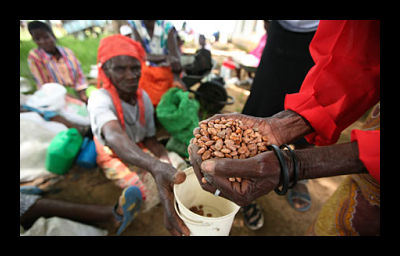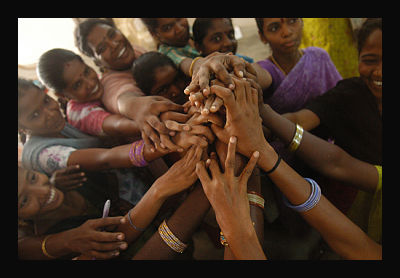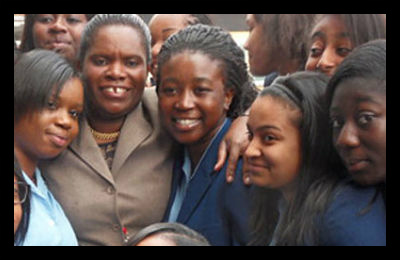People who make it their life’s work to end poverty have honorable intentions. But just because someone is honorable and attempts to do “the right thing,” doesn’t necessarily mean they know the best way to accomplish these goals.
The debate over what policies and initiatives work best for ending poverty often becomes heated, as thousands of aid organizations and nonprofits have conflicting ideas of what is best.
A common debate is over whether giving impoverished people direct cash transfers is better than working on top down development policies.
The basic arguments against direct cash transfer are that recipients will squander the money, spend it on “unnecessary” items, continue to expect more in the future or become lazy and not work.
It is also believed that impoverished people do not know how to lift themselves out of poverty and simply giving them money won’t teach them how to take care of themselves in the long term.
Over the past decade, proponents for cash transfers have begun to come forward with evidence that it might be a viable option in the fight to end global poverty.
The trend started in 2000 when a few Latin American countries started giving out conditional cash transfers (CCTs). Governments would give poor families a small amount of money with the “condition” that their children stay in school.
GiveDirectly is one organization arguing for the benefits of direct cash transfers. It works exclusively in Kenya and Uganda using mobile electronic transfers to distribute money.
The organization was established in 2008 and bases its operations on the idea that direct transfers will “empower the poor to set their own priorities” instead of experts deciding what is best for the poor based on their personal ideology.
On its official website, GiveDirectly cites a study by Innovations for Poverty Actions that shows the benefits of direct cash transfers.
Evidence from this study shows that, with direct cash transfers, assets increased by 58 percent. Assets include things like livestock and home improvements. There was a 42 percent decrease in the number of days children lived without food.
GiveDirectly also cites a 2011 review by the UK Department for International Development of studies on direct cash transfers. The review found that direct cash transfers can increase future income, with recipients earning 41 percent more than those who did not receive money.
Direct transfers helped children stay in school. Children experienced less psychological stress and were generally healthier.
Recipients did not spend the money on alcohol or gambling.
The review concluded that “the proposed programme [direct cash transfers] is “good.” It effectively achieves intended goals of reducing poverty, helping families to improve their livelihoods, or facilitating essential economic reforms. Transfers that benefit children and the elderly are generally seen as worthwhile by the general population.”
Another study by Johannes Haushofer and Jeremy Shapiro from the Massachusetts Institute of Technology found similar results.
In a recent article funded by the nonprofit charity evaluator Give Well, Jacob Kushner interviewed people in Kenya who were recipients of direct cash from GiveDirectly.
One of the recipients, Victor Ochieng, used $1,000 to buy a new irrigation system for his corn farm. This allowed him to triple his corn production, which gave him the idea to buy chickens. He can feed the chickens the extra corn and in turn have chickens and eggs to feed his family for many years.
Ochieng prefers the direct cash to traditional aid models because he feels it gives him control. “It is more respectful for someone to give me the cash and let me use it the way I wish,” said Ochieng. This is opposed to aid organizations coming in and directing how aid money is used.
Many recipients used the money to fix their roofs, something that doesn’t necessarily help increase their future income, but does save them money in the future by buying a stronger, longer-lasting roof once instead of having to replace the roof every year.
Recipeint Caroline Alouch Ogutu fixed her roof, paid for her children to go to school and bought some pigs.
GiveDirectly uses 90 percent of its budget for direct cash transfers. Charity rating websites like Give Well and The Life You Can Save claim the organization is legitimate and “top rated.”
There are of course critics who question the real effects of direct cash transfers. The Stanford Social Innovation Review argues that it is too soon to tell if they will have long lasting affects. It is possible that one or maybe five years from now those who received money will still be impoverished and show minimal improvement in their situation.
Stanford believes that “excitement about unconditional cash transfers is perhaps more a reflection of the sorry state of development aid overall than of the real impact of the cash itself.”
Other critics claim that direct cash transfers still don’t address the root causes of poverty. They don’t change the political and social situations most impoverished people find themselves in.
Direct cash transfers are not necessarily the absolute solution to ending poverty.
Direct cash transfers can, however, be supplemented with other types of aid. Traditional aid organizations can continue to build schools and medical facilities, promote good saving practices and teach farmers the value of water conservation.
Regardless of which type of aid makes a bigger impact or is “right,” how the cash transfer allowed Ochieng to feed and take care of his family is evidence that cash transfers can be beneficial and contribute to the reduction of poverty.
– Eleni Marino
Sources: GiveDirectly, UK Department for International Development, Take Part, The Life You Can Save, Give Well, The Economist, Stanford Social Innovation Review





